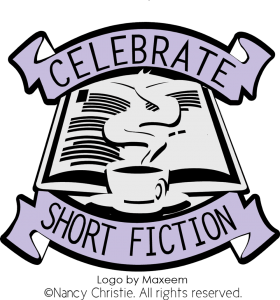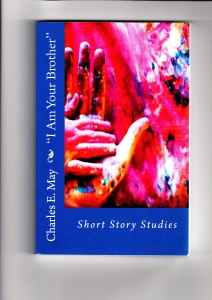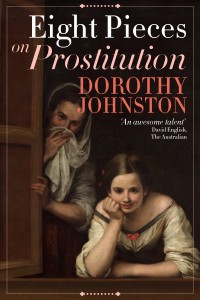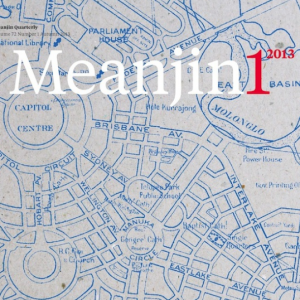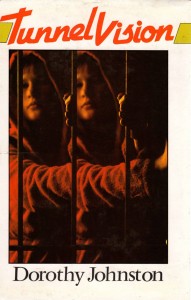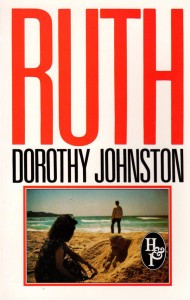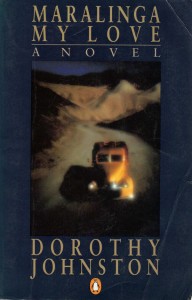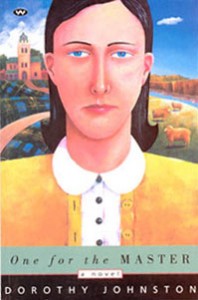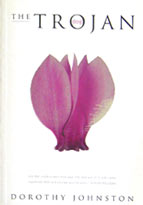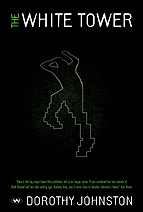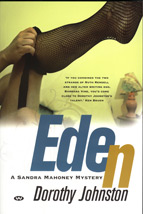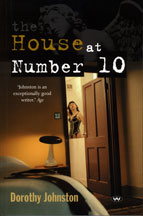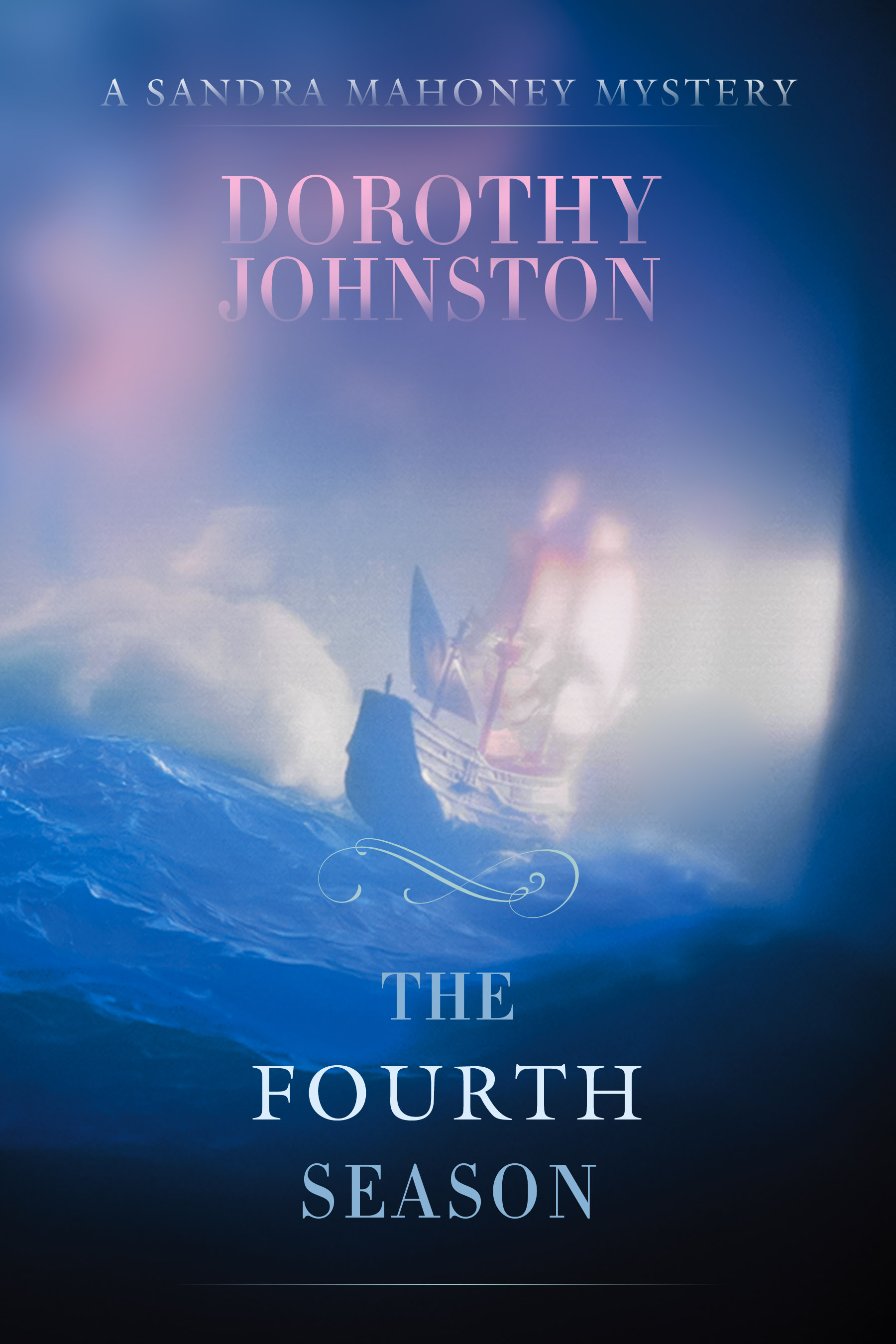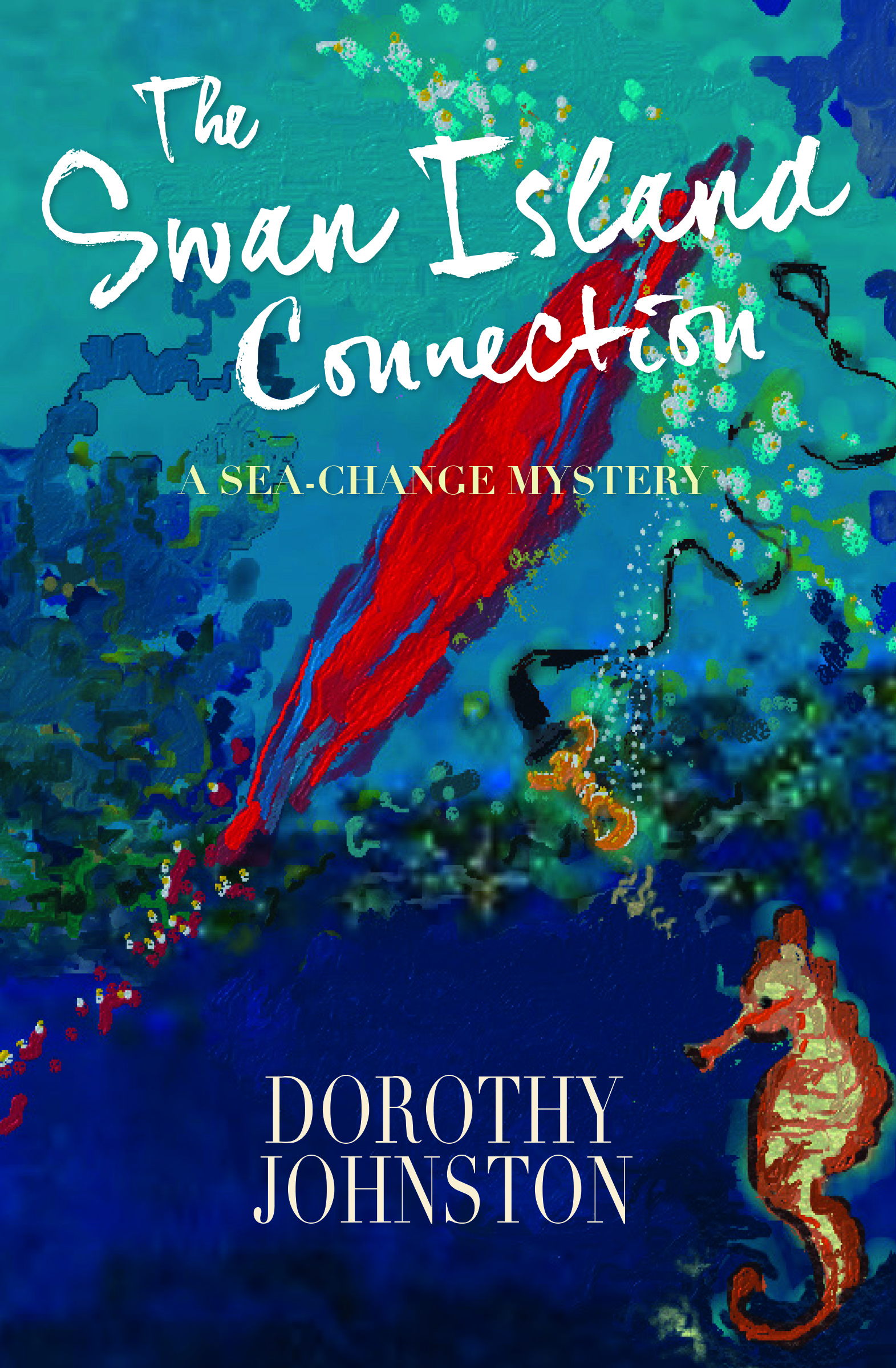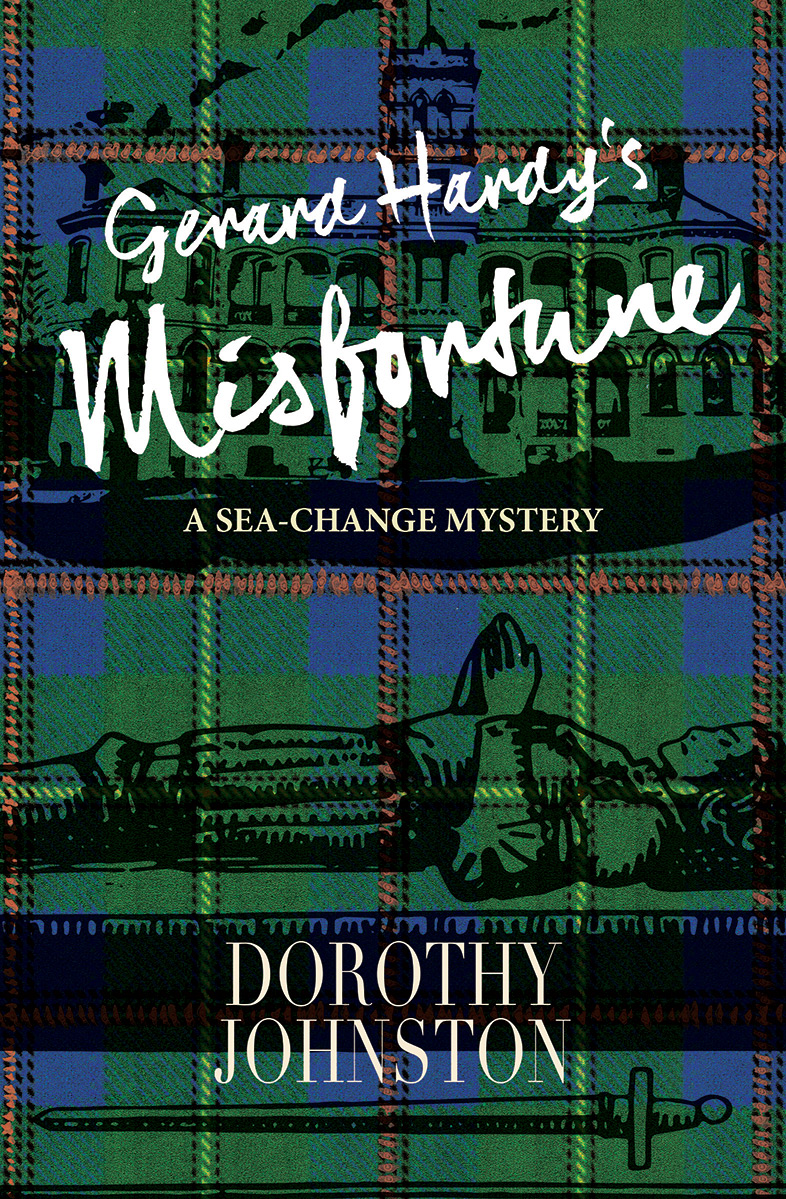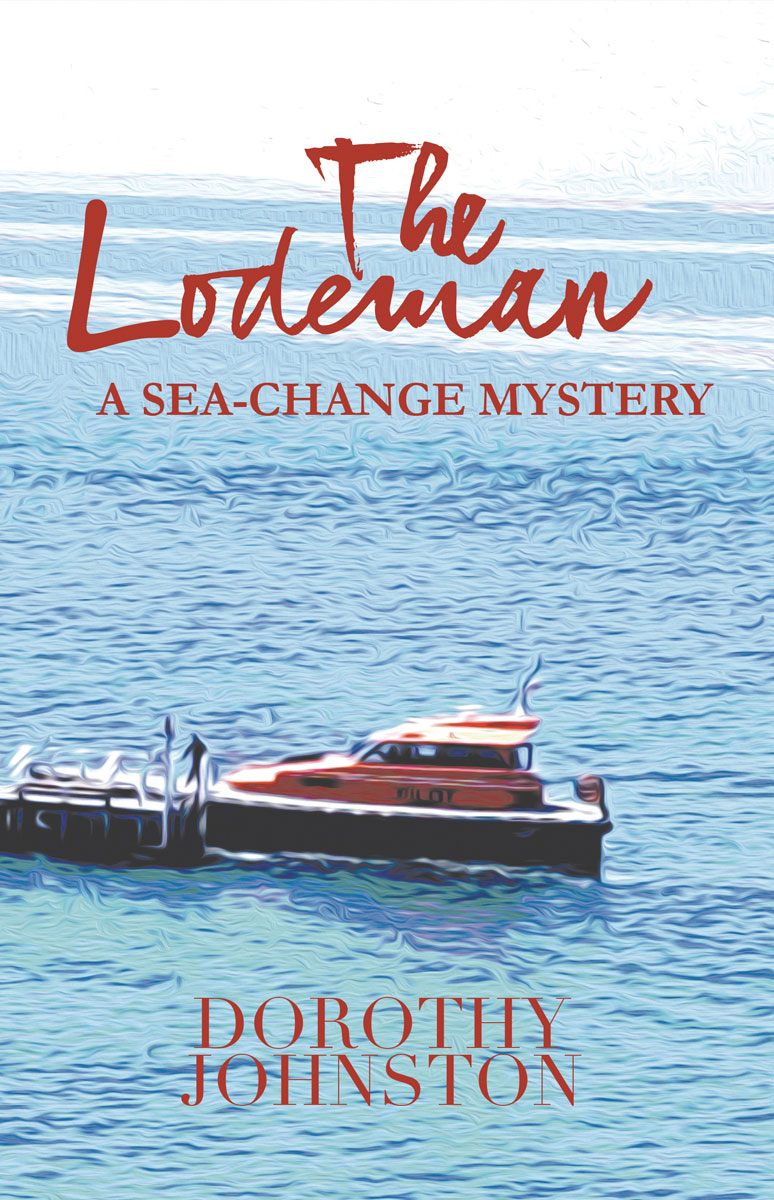Reading Paul Ruffin’s collection, Jesus in the Mist, reminded me of the stories I’ve written over the years ‘from the edge of childhood’ – stories where the protagonist, a girl or boy, stands with one foot on the shifting soil of childhood, mind filled with a mixture of the fantastical and grimly real, while another foot stretches out across the huge crevasse of puberty.
It’s a subject that draws many writers, of course, but there was something in Ruffin’s stories that I recognised instantly. In ‘Time of the Panther’ a fifteen year old boy is set a challenge by his grandfather. The boy scoffs at the annual re-appearance of a panther, in whom the old men of the district believe. They tell stories about him on the porch of the only store, and around the stove in winter. The boy’s grandfather orders him to cross woods and a meadow in the middle of the night, places where the panther’s tracks were last seen.
The meaning of this story can’t be conveyed by an outline. Like the best short stories, its mysteries deepen the more you read. The clash between old wisdom and new knowledge can’t be reconciled; the best you can hope for is that the image will hold, and that the rhythm will not break.
In ‘The Well’, the task his grandfather sets the protagonist is the apparently simple one of cleaning a well. ‘In Search of the Tightrope Walker’ is about a man’s quest to find a girl he saw walking a tightrope in a carnival when he was a boy.
‘Oh Lord, how he remembered her skinny little body so tightly bound by the silken silver outfit she wore that every bone stood out, ribs and pelvis and vertebrae and high on her back the nubs of her sprouting wings…
Septembers the carnival came to the little Mississippi town near where he lived, as surely as football seasons, welcomed with an almost frenzy by the kids who were still too young to be swept up in the sweat and agony and glory of the gridiron. And even more the country kids who rode their bikes down dusty backroads to the glitter and the glare, then back out under the eery light of the moon or simple stars, penniless, with the sticky sweet of cotton candy still clinging to their faces and the throb of the midway dancing from ear to ear.’
In ‘The Queen’ it’s an old man’s youthful dream of building a ship and sailing away that become the centre-piece, while his children mock him and call him senile.
I think that, in my own stories on the theme, I’ve been groping my way towards something like this – an image comes to me, and a person uncertainly straddled between past and future, and I have to find a way to test their resilience.
Of course, Paul Ruffin’s stories don’t just deal with young people on the brink of becoming adults; they cover many other subjects as well. Ruffin’s sixth collection, ‘The Time the Waters Rose’ and Stories of the Gulf Coast will be published by the University of South Carolina Press later this year. He is Professor of English at Texas State University, 2009 Texas State Poet Laureate and publisher of The Texas Review. An interesting article about Ruffin’s books, and his work as a publisher and teacher can be found in the Huffington Post.
Nancy Christie is the founder of Celebrate Short Fiction Day – a day, (the winter solstice in the northern hemisphere), for sharing short stories and enjoying them. I was so taken with the idea of short fiction day that I read Nancy Christies’s collection, Travelling Left of Centre and Other Stories.
The stories in Nancy Christie’s collection are vivid and compelling. The protagonist often finds her or himself in a trap – an impossible relationship, where the only way out is through violence to another, or oneself. In other stories, an event from childhood rears up to ambush the main character. Sometimes these characters are unable to distinguish between the fantasies they have created – for comfort, as an emotional shield – and the world of everyday reality to which they are compelled to return.
In the title story, a mother remarks to her pregnant daughter that, ‘on the highway of life’ she was ‘always travelling left of centre’ – a dreamer who kept dreaming, but never quite achieved her modest hopes, and meanwhile made herself an easy prey. It’s a description that fits most of Christie’s protagonists.
The stand-out stories for me were ‘The Shop on the Square’ where a young man walks into danger out of the hot Mexican sun, seeking only a cool place to lie down; The Sugar Bowl’ where the central image – beautiful, fragile and mysterious – says a great deal about the girl who owns it; and ‘Misconnections’, where the failure of machines is linked to emotional failure that can’t be put right.
In ‘The Storyteller’, a kind woman, who is not allowed to go on telling stories to sick children, does her best to let them down gently. In ‘Anything Can Happen’ a woman’s careful routines crack wide open. Christie’s stories chart the emotional chasms that open up under deceptive everyday surfaces, and pay tribute to the damaged human beings who must cope with them. A memorable collection.
“The winter solstice marks both the start of winter and the shortest day of the year. So why not take advantage of the long winter night to curl up with a good short story?” ~ Nancy Christie, founder of Celebrate Short Fiction Day.
I’ve only just discovered Celebrate Short Fiction Day – a little late, since the solstice has just passed – and on the wrong side of the world, of course, for the shortest day! But why not make the summer solstice an occasion for celebrating short stories too?
I love short stories, and refuse to see them as the poor relative of the novel. So why not mark this solstice, or look forward to the next one, by curling up on a beach with a good collection, or share a much-loved story with a friend?
My two favourite story collections for 2014 are Australian Love Stories published by Inkerman & Blunt, and The Trouble With Flying, published by Margaret River Press. I’d also like to mention two wonderful bloggers who value short stories, Whispering Gums, who reviewed both these collections, and Charles May, whose Reading The Short Story is both an education and delight.
Thanks to Pixel Hall Press for drawing my attention to this wonderful opportunity for celebrating short fiction.
Pixel Hall Press is certainly doing its bit to keep the form alive, as shown in this quote from their website:
‘When we established our PHP Shorts imprint, we predicted, “The market for short stories and novellas is about to experience a renaissance, spurred in part by the proliferation of smartphones, eReaders and tablets. The length of a story is becoming irrelevant. All that matters is that it’s a great story that captures the readers’ interest and imagination.” Whether readers choose to enjoy it on an e-reader or prefer the tactile pleasure of turning the pages, the result is the same: a feeling of pleasure and satisfaction from reading a complete, beautifully crafted story in one sitting.’
Let’s hope that, by the next solstice, we’ll have a Celebrate Short Fiction Day in the southern as well as the northern hemisphere!
I first came across Professor Charles May’s blog eighteen months ago and was immediately struck by the quality of May’s insights into the short story form. May has published 8 books and over 300 articles on the subject of short stories, and I Am Your Brother is the culmination of forty years of teaching and thinking about this often misunderstood and disparaged prose form. True scholarship, in the sense of being heart-felt as well as erudite, is unmistakeable, and I recommend this book both to readers and writers of short stories, and to those who have not, up until now, given them much thought.
One of May’s central concerns is that short stories have suffered in the past, and continue to suffer, by being compared, in a simplistic way, to novels; by being considered no more than bits of novels, constructed according to the same formal patterns and with the same narrative ends in view. He sets out to dismantle these false assumptions and he does so very convincingly.
Short stories have ancient ancestors, and have remained connected to their roots in the sacred parable, allegory and myth. The everday passage of time, cause and effect, the development of individual characters within a social framework are all hallmarks of the novel from the eighteenth century onwards. In the short story, because of its shortness, and because its writers started out with very different aims, time is just as likely to be compressed, or frozen.
In discussing Edgar Allan Poe’s approach to the short story, May points out that it ‘reflects the basic paradox inherent in all narrative: the writer’s restriction to the dimension of time juxtaposed against his or her desire to create a structure that reflects an atemporal theme. Because of the shortness of the short story, the form gives up the sense of real time, but compensates for this loss by focusing on significance, pattern and meaning.’
Important themes for me, in I Am Your Brother, are the sense of mystery to be found in the best short stories, how they give an outer shape to inner meanings, manage to convey what can’t be put directly into words and eschew so-called rational explanations. May quotes Flannery O’Connor who ‘once said that what the short story writer sees on the “surface will be of interest” only as it can be gone through “into an experience of mystery itself.”
From Boccaccio’s The Decameron up to the present day, May illustrates his points with pertinent and interesting examples. My knowledge of short stories and what makes them essentially different from long prose forms, has been greatly enhanced by reading this book.
Above is the text of my Amazon review of I Am Your Brother, but I thought I would add a few more personal thoughts about it on my blog.
Having had eight novels published, and with a ninth (The Fourth Season) soon to be released, I am better known as a novelist than a short story writer. However, a few of my short stories have had multiple publications in anthologies and have found a readership. Two of these are ‘The Boatman of Lake Burley Griffin’ (Canberra Tales, Below The Waterline, The Invisible Thread) and ‘Two Wrecks’ (Best Australian Stories 2008 and Best Australian Stories – a ten-year collection, 2011).
The success of these stories, coupled with my experiment in self-publishing an ebook collection, Eight Pieces On Prostitution, has got me thinking about the place of short stories in my writing life.
Like many fiction writers, I always know when an idea is a ‘short story idea’, and I always hear, with my inner ear, before I set a word down, the tone of voice I will need to sustain. Needless to say, this is very different from how I begin the project of writing a novel. I have often been criticised, and, I am ashamed to say, too often bowed to the criticism, that my fiction is elliptical and indirect when it should be straightforward. I have often been asked to explain or clarify character and motivation when this was the last thing that I felt like doing.
Reading I Am Your Brother made me feel that my instincts were right all along, and that those criticisms came from perspectives and expectations that were alien to me, and to which I should never have tried to reconcile myself.
My short story collection ‘Eight Pieces on Prostitution’ is now available for $9.99 on Authors Unlimited, part of the ASA website, as well as
Amazon, Apple iBookstore Australia,
and Booki.sh.
The stories span the whole of my writing life and include my first published story, ‘The Man Who Liked to Come with the News’, which Frank Moorhouse included in ‘The State of the Art’, 1983. My first novel, ‘Tunnel Vision’, published the following year, is set in a Melbourne massage parlour, and I have continued to return to the subject of prostitution in my novels and short stories, notably in ‘The House at Number 10’ and in this collection. ‘Where the Ladders Start’ is a long story, almost a novella, based around a suspicious death. Many of the stories are set in Canberra, where I lived for thirty years. Once the city gained self government, it pioneered the de-criminalisation of prostitution, which remains an interesting prism through which to view our national capital.
The cover design is a based on a painting by Bartolome Esteban Murillo called ‘Two Women at a Window’, which is held at the National Gallery of Art, Washington DC. Though the women in the painting are probably prostitutes, it is not absolutely clear; there’s an ambiguity about them, as well as an amused self-awareness. I like this very much and feel that it suits my stories.
My story, Mrs B, is now up on Meanjin’s website, along with many of the contributions to the Canberra centenary issue, including David Headon’s wonderful essay on the Griffins. See my earlier blog post on this.

I really like the illustration Meanjin has chosen to go with my story, in which flowers play an important part.
Here’s an example. Mrs B, who has had to give up her dress shop at one end of Acland Street, St Kilda, finds work in a massage parlour at the other end. She receives a lot of flowers.
‘They had a kind of lop-sided concentration about them, as if, in their freshly watered folds, was stored a knowledge of all the flower arrangements clients had ever bought for their favourite girls. They were smooth to the touch, even the rose thorns were smooth, as though, out of nature or beyond it, they might never wilt. And yet they were real flowers. They had been plucked alive.’
‘Mrs B’ is one of the stories in my soon-to-be- published collection, Eight Pieces On Prostitution.
Canberra has turned a hundred, and March is the birthday celebration month. Meanjin’s centenary issue was released last week and I’m lucky enough to have a story included; it’s called ‘Mrs B’. At just over 2,000 words, my story is a modest contribution, and indeed fiction is modestly represented in the issue as a whole. There are four short stories, compared with sixteen non-fiction pieces – essay, memoir, the section titled ‘Perspectives’ which begins the issue, and the superb Meanjin Papers section about Walter and Marion Griffin. Add to this the conversation with Christos Tsiolkas and the twelve poems, and you’ll see what I mean.
Does this matter? Not a bit. The qualities I look for in a good short story – originality, attention to detail, authenticity of voice – are there in abundance in the non-fiction pieces, and – it would be a surprise if this weren’t the case – in the poetry as well. I read the issue in several sittings – or rather lyings on the couch – over the weekend, and, as I sat down to write about it, I realized that it was the simple acts of bearing witness that moved me the most, the way the different contributors have of homing in and saying, ‘Yes, this is way it is; this is the way it was, and is.’
I’ll go further and say that I believe it is these simple acts of bearing witness, rather than arguments and counter-arguments, that will, in the end, dismantle the myths about our national capital, myths too well known, and enumerated by me in other places, to repeat here.
I’m not going to refer to every contribution that impressed me; this blog post is by not meant to be any kind of comprehensive review; but I’ll begin with Andrew Croome’s quiet and reverent description of Mount Stromlo after the 2003 bushfires, and his comments on the observatory’s history, as an example of the kind of ‘witnessing’ I mean. On the subject of fire, there is the excellent poem, ‘As Flames Were My Only Witness’ by Russell Erwin. And going back in time, David Headon’s ‘The Genius and the Gypsy: Walt and Marion Griffin in Australia and India’ is a piece I cannot recommend highly enough. If you read the issue for nothing else, read it for this. Headon’s scholarship, his elegant prose, and his own humanity shine through.
It is fitting that monumental buildings are given their due place, but it’s the ironic, scaled, human perspective that drew me in and made me want to read about them. Two of the memoir pieces – ‘Very Happy to be Here’ by Yolande Norris, and ‘Constructing a City, Constructing a Life’ by Marion Halligan are good examples of a refusal to be over-awed by generalised assumptions, but to state, in lyrical and careful prose, what is.
I plan to write more posts about Canberra’s younger generation of writers in the coming months, as well as Canberra’s not-so-young-any-more, but not as well known as they should be writers too.
My Invisible Thread interview is finally up on youtube. I’m the lucky last in the series that Irma Gold, editor extraordinaire, has made for the anthology, The Invisible Thread: a hundred years of words, celebrating the centenary of Canberra. I’m proud to be included. Both the interviews and the book are marvellous chronicles of writing produced in and about the national capital.
Irma Gold tagged me for the ‘Next Big Thing’. If you haven’t reached this post from her blog post about the next big thing then you can read it here.
What is ‘The Next Big Thing’? It’s like one of those old-fashioned chain letters where authors promote their own work and tag five of their colleagues to create a huge network of linked web and facebook pages about what everyone hopes will be ‘The Next Big Thing’.
1) What is the working title of your next book?
Nine Pieces on Prostitution
2) Where did the idea come from for the book?
The book will be a collection of my prostitution stories written over some thirty years, so obviously ideas for stories came from different places; but one, which is a very long story, almost novella length was inspired by a client dying ‘on the job’ as it were, and what the women did with the body.
3) What genre does your book fall under?
Short stories
4) What actors would you choose to play the part of your characters in a movie rendition?
Now that’s a curly one: I can’t somehow see a movie of a short story collection; but one, in particular, I think would make a great movie. It’s called ‘An Artist’s Story’ and is about an architect who’s hired to design a brothel, and her friend, ho becomes involved with the house, and the women who work there. The female lead I envisage being played by Cate Blanchett. The music score would include lots of Tracy Chapman.
5) What is the one-sentence synopsis of your book?
A collection of stories on a theme that has intrigued me for my entire writing life.
6) Will your book be self-published or represented by an agency?
I plan to self-publish the collection on Smashwords.
7) How long did it take you to write the first draft of the manuscript?
No single story took me very long, perhaps a couple of months for ‘Where The Ladders Start’, the longest in the collection.
What other books would you compare this story to within your genre?
John Clanchy’s ‘Her Father’s Daughter’ is a collection of stories on the theme of father/daughter relationships, and, since I admire Clanchy’s writing very much, I’ll be so bold as to cite it here. While there are obviously plenty of short story collections based around a theme, I really don’t think there is much of a precedent for my ‘Nine Pieces’.
9) Who or what inspired you to write this book?
My first novel, Tunnel Vision is set in a Melbourne massage parlour in the 1970s, and the oldest story in ‘Nine Pieces’ was written in the ‘70s as well. I think it was the extreme oddness of the sex industry in Melbourne at that time, the theatricality and subterfuge and madness! of it that got me in, and that has stayed with me.
10) What else about the book might pique the reader’s interest?
Some – more than half – the stories are very Canberra. I think prostitution is a great way to write about the underside of our national capital. I would also like to mention that one of the stories, titled ‘Mrs B’ has been chosen for inclusion in Meanjin’s Canberra centenary issue. I’ll be writing about this special issue in a later post.
If you’d like to read more about Nine Pieces on Prostitution you can do so here.
I have tagged Lucy Sussex
Lucy Sussex is a writer, reviewer and editor, whose work ranges from children’s writing to the herstory of women crime writers. She has either written or edited over 20 books, published internationally. Her next big thing, deadline July, is VICTORIAN BLOCKBUSTER: FERGUS HUME AND THE MYSTERY OF A HANSOM CAB. It looks at the story behind the biggest-selling detective novel of the 1800s, one which created the market for Conan Doyle and Sherlock Holmes. VB touches on much, from theatre history to a copycat murder, and how a small-press book from the colonies conquered the crime-reading world.
And Margaret Innes, who says,
I have one completed manuscript of contemporary fiction titled A Bracelet of Bright Hair requiring some redrafting. I’m also well into an historical novel City of Men where I examine the life of one of the earliest surgeons, William Redfern. Writing this has proved one of the most interesting experiences I’ve had as a writer.
Maureen Cashman writes


